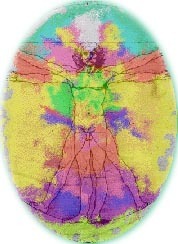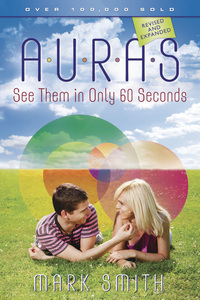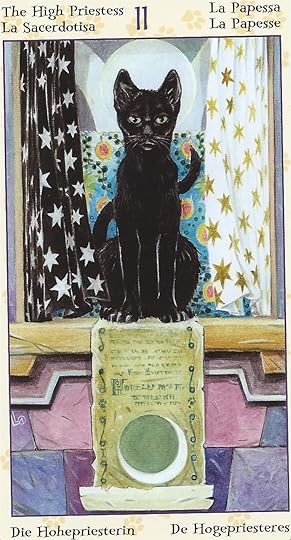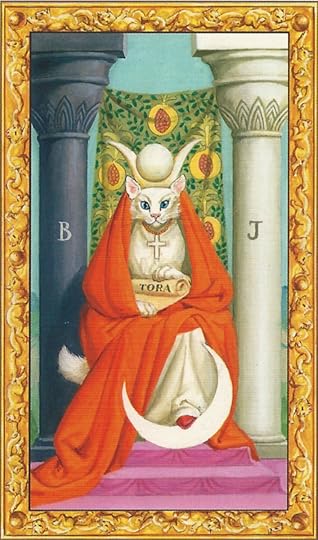Llewellyn Publications's Blog, page 80
September 6, 2013
Great Sex Made Simple Wins Living Now Book Award
We are excited to announce that  Great Sex Made Simple by Mark A. Michaels & Patricia Johnson has won the Silver Medal in the “Feminity/Sexuality” category of the 5th annual Living Now Book Awards.
Great Sex Made Simple by Mark A. Michaels & Patricia Johnson has won the Silver Medal in the “Feminity/Sexuality” category of the 5th annual Living Now Book Awards.
Additionally, the book has won several other awards, including:
2013 IPPY Award (Gold, Sexuality/Relationships); the awards, launched in 1996, are designed to bring increased recognition to the deserving but often unsung titles published by independent authors and publishers.
ForeWord Awards (Silver Award, Self-Help category); ForeWord Reviews’ Book of the Year Awards were established to bring about increased attention to the literary and graphic achievements of independent publishers and their authors.
ForeWord Awards (Finalist, Family & Relationships category).
The Living Now Book Awards are designed to bring increased recognition to the year’s very best lifestyle books and their creators, and celebrate the innovation and creativity of newly published books that can help us improve the quality of our lives, from cooking and entertaining to fitness and travel.
More information about these awards, Mark & Patricia, and Great Sex Made Simple can be found on their website at http://tantrapm.com/.
September 5, 2013
New Moon in Virgo, September 5, 2013
The New Moon in Virgo occurred this morning, Thursday, September 5, at 7:13 pm EDT (11:13 am GMT), at 13 degrees. New moons signify a new cycle, new beginnings, and rebirth.
This New Moon, along with the Sun (also in Virgo) will highlight the earthy Virgo qualities of analysis, calculation, cleanliness, as well as sixth house themes of health and well-being. This New Moon period is the perfect time to examine your health and home. Are you lacking motivation to begin a new fitness regime? Or perhaps you have have been ignoring the dirty nooks and crannies of your home? Now is the time to initiate changes, from cleaning the house, revisiting your budget, or finding physical health. Enjoy this feeling of new beginnings and fresh starts—which happens to coincide with the return to school for many kids and the return to work for many adults.
Controversial Topics in Tarot
Not long ago, I asked some of my peers and friends if they had any beliefs or practices regarding tarot that might be considered controversial by their fellow tarot readers. Some interesting items came up. The question was sparked by a controversial thought that has been bubbling in the back of my mind for several months now. This month, I’m going to talk about some of the specific items my friends mentioned. I’m going to save my controversial issue for later in the month.
Although I know that different readers had different ideas about shuffling, I didn’t realize that some thought their particular belief would be considered controversial. Specifically, some people felt that their practice of not having the querent shuffle the cards would be seen as outside the normal or proper practice.
I have seen a fair number of books or articles that say that the querent must shuffle the cards in order to put their energy into the reading, but I didn’t know that this was considered normal or most appropriate by the general tarot reading community. This has ramifications for phone/Skype and email readings.
What is your position on this? Do you think there is a commonly accepted method amongst the tarot community? Do you think there is a right and a wrong way? How did you come up with your own method?
As for me, when I write books about tarot, I try to include all the possibilities (reader and querent shuffle, querent only, reader only, reader shuffle and querent cut, etc). When I do readings in person, I always shuffle and never offer the cards to the querent. For me, it has nothing to do with energy and everything to do with wanting to help the querent feel relaxed. Early in my career, I had the querent shuffle, but almost always, it made them nervous, as if they were worried about doing it wrong. So now I shuffle while they talk about their question. Maybe the rhythm of the shuffling helps create a meditative, calming white noise.
September 3, 2013
Too Many Cats?
I can hear the cat lovers out there saying, “There can never be too many cats!” But I have heard some of my fellow tarot lovers remark on the number of any sort of themed decks. “How many fairy-themed decks do we need?” Or “How many cat decks are possible?” What do you think?
As a deck creator and as a tarot lover, I don’t think that any one deck can be the end-all-be-all exploration of any theme. Every artist and creator will present different ideas, both in images and in deck structure. In addition, people are drawn to tarot not just by themes but by art. If there are several decks exploring a theme, all with different artistic styles, then a person can use whichever appeals most to them.
Many themes appeal to deck creators: dragons, cats, fairies, magic, witchcraft, paganism, legends and myths and pantheons of all sorts, vampires, steampunk. These themes appeal to people for lots of reasons, but the common reason is that they resonate with us for some reason, be it religion, preference, or aesthetics. Creators are drawn to different themes because they are popular…and they are popular for a reason. They are striking a chord in the collective psyche. If they are striking a chord, then using the structure of tarot to explore them is a wonderful way to explore why a certain theme resonates.
And apparently cats are very popular among the general tarot loving audience. Here are three High Priestess cards from three different cat-themed decks. They are all different styles and they all share some similarities and some differences. They are all unique, in the same way that 50 artists painting images of the same cat would be unique. They are all the same in that the archetype of the High Priestess is at their core.
August 30, 2013
Seeing the Aura
Several years ago I was the editor-in-chief of FATE magazine. It was really a thrill to do that because I had been reading FATE since I was a kid.
One of the topics that was always of interest to readers of FATE was the aura. For the Llewellyn Encyclopedia I wrote this about the aura:
[The aura is an] emanation or set of emanations that extends around objects and animals, including the human body. There are multiple beliefs as to the number of different types of auras that extend around the body. Some say there are seven, others say five or three.
The aura extends from just above the surface of the skin out to infinity. It becomes more and more ethereal as it extends further from the body, and beyond about three feet even people who can see auras are not able to detect it. The smoothness of each aura level, as well as the pureness of its color, are said to indicate the conditions of the person they surround.
In the three-fold system of interpretation, the area closest to the skin is said to relate to your physical well-being. Outside of this physical aura is the mental aura that relates to your state of mind. It could be called the psychological aura. The third part of the aura is the spiritual element. It relates to your spiritual advancement and is further away from the body than is the mental aura. Actually, all three are said to interrelate and overlap…
Many occult groups highly value being able to see the aura and interpret its meaning. The original Hermetic Order of the Golden Dawn would have someone who specialized in auric vision check out your aura before you could become a member. Personally, I suspect this was a way for a few people to have a bit more power than they should by giving thumbs up or thumbs down to a potential initiate. After all, what recourse did you have to someone claiming your aura was off?
Seeing the aura, therefore, was not only a cool skill to develop, it was also a valuable tool to have. For years, FATE magazine advertised “Aura Goggles.” These were invented by Dr. Walter Kilner, and he described them in a book.
They were made from two pieces of glass between which was a dark purple dye known as dicyanin. Here is what an antique pair of them looked like:
Unfortunately, the dye became hard to obtain and today people just use dark purple lenses that may or may not filter the proper wavelengths. I’ve seen modern versions priced from $20 up to $200. Luckily, you don’t have to spend that much. Here is my simple method for developing auric vision.
Method 1
Requirements:
A flashlight that can stand on end so that the light shines upward. Its light should not be very bright.
A piece of black construction paper, about 8.5 x 11 inches in size
Technique:
Step one: In a comfortable room, sit in a chair at a table and dim the lights so that the room is dark. It does not have to be totally dark.
Step two: Put the flashlight on the table and turn it on, with the light pointed upward.
Step three: With either hand, hold the sheet of black paper above the light so that it is “backlit” and the glow of the light can be seen around the edge of the paper.
Step four: Hold your other hand about 1–3 inches in above the paper.
Step five: Look at your hand above the paper, then allow your vision to go “soft” by trying to visually see as wide an area as possible. Don’t blink. If your eyes water, let them water.
Step six: In a few minutes you should be able to see a faint hazy glow around your hand. It is variously reported as white, silver, gray, or golden in color. Once you see it, focus on it. What does it feel like when you see this glow?
What you are observing is the physical aura. With practice you will be able to repeat the sensation without the dark room and paper. That is the particular sensation you feel when you are seeing the aura.
Method 2
Requirements:
A table
A chair
A table lamp with a low-wattage bulb
A standard sheet of black poster board (about 22 x 28 inches)
An easel to hold up the sheet of poster board on the table
Technique:
Step one: This is for a group of people. Set up the table with the lamp on it. Put up the easel and place the poster board on the easel. Put the chair in front of the table.
Step two: Turn out the room light and turn on the table lamp. That should be the only lamp in the room.
Step three: A volunteer should sit in the chair so that the posterboard is behind that person’s head and shoulders.
Step four: The audience should look at the volunteer’s head, then allow their vision to go “soft” by trying to visually see as wide an area as possible. Don’t blink. If your eyes water, let them water.
Step five: In a few minutes members of the audience will start to see a faint hazy glow around the volunteer’s head. It is variously reported as white, silver, gray, or golden in color. Once people see it they should focus on it and on the sensation they get when they see it.
Step six: After a few minutes, repeat with another volunteer.
With practice, you should be able to repeat the sensation at any time and place. What you’re seeing is the aura.
What Does it Mean?
The ability to see the aura means, well, it means you can see the aura. With practice, you’ll be able to expand your vision so you can see different levels of the aura. You’ll also be able to see different colors. Here is a supposed image of the aura made using a fancy and expensive machine:
You’ll notice different colors around the figure and their interplay. And this is where the challenge of aura interpretation comes in. Where does one level of the aura end and the next begin? There’s no fine line. Similarly, where does blue end and purple begin? In fact, what you call blue, I might call indigo or even purple. This means any book that says a particular color in the aura means something should be taken with a grain of salt…or maybe a mine of salt.
Use books as resources, not facts written in stone! When you see a color in the aura, ask the person about it. If the color was in the physical part of the aura, ask about their health. If the color is in the mental part of the aura, ask what that person feeling or thinking. If it’s in the spiritual part of the aura, ask about their spiritual practices. If the color goes through different levels, you may inquire about several things. In this way you’ll be able to develop your own vocabulary of what colors, shades, intensities, and nuances of the colors in the aura actually mean. In this way you can perfect your ability to interpret the aura.
This doesn’t mean ignore books on the subject of aura vision. They can be valuable tools. Three I recommend include:
.
.
.
..How to See and Read the Aura by Ted Andrewsby Ted Andrews
.
.
 Auras: See Them in Only 60 Seconds by Mark Smith, and
Auras: See Them in Only 60 Seconds by Mark Smith, and
The Compete Book of Auras by Richard Webster…
.
.
.
.
August 29, 2013
SEE Me LIVE Tonight!
That’s right, the headline reads you can see me live, tonight. I am going to be giving a video interview with Anita Perez and Tidal Millar tonight, and you can see it on your computer.
Thursday, August 29, 2013
8:00 p.m. Eastern——5:00 p.m. Pacific
Live Interview with me on Aphrodite’s Kitchen
Tune in and listen or WATCH: www.paraencountersnetwork.com
Next Thursday, the 29th, I’m scheduled to be talking with hosts Anita Perez and Tidal Millar of Aphrodite’s Kitchen. Among various topics we’re going to be discussing is Tantra as a complete spiritual system. Even though most people think Tantra is just “that sex stuff,” it’s actually a full Pagan system that has been practiced and evolved for thousands of years. To find out about real Tantra, be sure to click on the link above and listen in! Oh, we may get into a bit of Tantric sexuality, too.
Here’s the LINK that will get you there. Please come by and say Hello!
Art of Tarot 6
In this series, we are taking the time to smell the roses, which for tarot lovers often means taking the time to really appreciate a single image of tarot art.
Today we look at the 8 of Spring from the Victorian Fairy Tarot by Lunaea Weatherstone and Gary Lipponcott. You can see more HERE.

The 8 of Wands can be a boring card, usually with just 8 sticks flying across the space of the image. These archers, though, manage to capture the meaning and express it even better, I think, than the traditional image. They carefully line themselves up, taking aim. Once they release the arrow, there is little that can change its course. Besides that, I just love the card, the squirrel watching, the jaunty feathers in their caps, the golden glow of a perfect day.
August 27, 2013
Scrying to See Spirit
Readers, please enjoy this guest blog post by Diana Palm, author of Setting Spirits Free.
The concept of the spirit world is by no means new, but until recently, only sages and mediums could access it. What if I told you that there is a technique that the average person could learn to help them communicate directly with their loved ones on the other side? 
Many of you may be familiar with the technique called scrying. Scrying is often associated with tea leaf readings, cloud interpretation, or crystal bowl gazing. I am going to share a method of scrying with you that you can do at home; this method is designed to raise your vibration and slow down your brain waves, which will allow you to see spiritually. Anyone can learn to scry.
I suggest that you do this technique with a partner before attempting to do it alone. Sit across from your partner with a small table between you. Place a white taper candle in the middle of the table, at about chin height. Begin by setting your intention to communicate with the spirit world and to see your departed loved one. Place a bubble of protection around your table so that you will only allow in spirits that are in your highest and best to communicate with. Now, stare at the third eye or brow bone area of your partner. You may blink, but do not talk or laugh or wiggle around; the more focused you are, the higher your combined vibration becomes. With concentrated efforts, you will be able to drop the veil and see into the spirit world. Sit in silence as you continue to gaze patiently. This could take up to 20 minutes, depending on your ability to hold a higher vibration. Allow your eyes to gently go out of focus when they need to and you will begin to see faces superimposed on the person sitting across from you. Typically, you will see a flash of the past life faces of your partner first; you may also see angels or spirit guides of theirs. Be clear that you wish to see your departed loved one, who will be able to step into your partner’s energy field so you can see them. Your partner’s aura helps illuminate the spirit so they can be seen and interacted with. At no time does a spirit enter your body or drain your energy, because this method has increased your vibration to meet theirs.
Once you have experienced this method, you may also do this alone in front of a mirror. Having two people focused on scrying helps to raise the vibration quickly, but it can also be achieved alone. The more you practice this technique, the more your eyes will become trained to see into the spirit world and detect subtle energy moving around you. Think of a happy memory of your loved one to help them connect with you easier. Always thank the spirit world for their cooperation and show respect.
Our thanks to Diana for her guest post! For more from Diana Palm, read her article “10 Reasons to Help a Ghost Cross Over.”
Art of Tarot 5
In this series, we are taking the time to smell the roses, which for tarot lovers often means taking the time to really appreciate a single image of tarot art.
Today we look at the 4 of Wands from the Tarot of the Hidden Realm by Julia Jeffrey. You can see more images HERE.

In this deck, Julia explored the interaction of the energy of numbers with the elemental energies of the suits. Here, the stability of the 4 really helps the energy of fire come together in a way to create something really special. Fire is a very volatile energy and if supported through a good structure, it really shines. I love the idea of the four musicians all paying attention to each other and deftly responding to each other’s music. Also, the 4 of Wands often represents a temporary structure or activity (like a picnic or a canopy raised for a party) and music, once played, is gone…temporary. It’s a reminder to be present to energy the gift of the 4 of Wands. This is appropriate for me today as when this posts, I will be on vacation with my family. I will remember to enjoy those precious moments.
August 26, 2013
Change Is/Isn’t Good for Magick
In 1973, the Aquarian Press published R. G. Torrens’ The Secret Rituals of the Golden Dawn. This came four years after Spearman had published his The Inner Teachings of the Golden Dawn. A close reading of them showed variations, but not major differences, between the content of those two books and Israel Regardie‘s The Golden Dawn. I remember reading Regardie’s review of the books by Torrens, and he was not enthused, claiming the information appeared to be just re-writes of his own book.
Later, Regardie came out with another version of the Golden Dawn‘s rituals and teachings that were closer to the Torrens’ books than his previous writings. It seems that the minor differences found in the works by Torrens were actually derived from an earlier version of the Golden Dawn’s beliefs and practices.
So picture yourself part of a Golden Dawn group back in the mid-1970s. Perhaps you had been successfully working the Golden Dawn system, following Regardie’s book, for more than a decade. Should you abandon the practices that you know work for a different version of unknown value? After all, Torrens presented techniques that were closer to the original intent of the Golden Dawn founders.
At that time I knew of several Golden-Dawn focused groups. I was in contact with many members. Not one group I knew of switched to follow Torrens; not one went back to a more “original” version.
And if you think about this, it makes complete sense. Members of the Golden Dawn had abandoned Torrens’ versions half a century earlier. Modern groups were successful using the changes instituted then. Why return at all?
The original Golden Dawn Order accepted the concept of change. Or more accurately, the trained and experienced leaders of various Golden Dawn groups accepted and adopted valuable changes that improved on the techniques and work that had gone before.
—————
Now jump to the present. I have seen various versions of “improved” versions of the Golden Dawn rituals and teachings. Ignoring the changes that are made for political reasons to try and give extra power to individuals, most (but not all) of the changes I’ve seen have one thing in common: they were created by people based on personal philosophical beliefs rather than an inner understanding of the teachings.
One of my favorite examples of this is that some groups have changed the use of the word “Lord” in Golden Dawn rituals to “Lord and Lady” or “Deity.” On a superficial level I fully understand this. At the time the GD was founded, even though the Order was amazingly non-sexist in practice, the members still used a language that, following the practices of the time, was sexist. I am in favor of eliminating sexism.
However, this change deconstructs the rituals, changing life-altering mystical symbolism into an English-only ritualized drama and, for that section, nothing more.
I can sympathize with the desire to do this. It’s much easier to focus on the modern language and ignore the meaning behind the language. Specifically, the use of the term “Lord” comes from the Hebrew Adonai. This name of God is actually a formula with certain meanings. “Lord and Lady” would probably be Adonai v’Adati. “Deity” would probably be the Tetragrammaton, formed of the Hebrew letters Yod-Heh-Vahv-Heh which is considered unpronounceable.
These three different names for the Godhead each imply different things. Making as simple and innocuous a change as this without understanding the changes to the meanings of the passages that use the terms is questionable.
To my mind, in this instance some of the changes are clearly not good for magickal practice.
—————
So am I for or against change in magick? Recently, thanks to improved research and scholarship, there have been increasing discoveries and revelations of older magickal techniques. Should we not incorporate these earlier techniques into our practices?
To my mind that’s like suggesting we should go back to the surgical techniques where they didn’t sterilize hands and tools.
Just because something is old doesn’t mean it’s better.
So should we accept and use modern changes to magickal philosophy and techniques? In those instances where the changes are instituted by people who are trained and experienced, and who have found working with new methods and ideas result in positive and successful situations, I’m strongly in favor of introducing them to accompany those methods that have a history of working.
Just because something works for an individual who is trained and experienced does not mean it will work for others. Perhaps it will work for no one else, in which case it should be abandoned except for personal work. Perhaps it will work for some people, in which case it should be accepted as an alternate. And if it works for all to a level better than the original, it should be adopted.
Just because something is new and works for one person
doesn’t mean it will work for everyone.
So I am in favor of change when and where it is warranted. I am not in favor of holding on to obsolete practices and concepts. On the other hand, I am also not in favor of change just for the sake of change. There should be theoretical, philosophical, and practical reasons to alter something that is currently working.
Or put more simply, thoughtful and effective change in magickal techniques should be adopted. Unconsidered, ineffective, or politically motivated changes should be ignored.
What do you think? Do you embrace everything new or do you seek something older? Let us know in the comments section.
* * *
Thursday, August 29, 2013
8:00 p.m. Eastern——5:00 p.m. Pacific
Live Interview with me on Aphrodite’s Kitchen
Tune in and listen: www.paraencountersnetwork.com
Next Thursday, the 29th, I’m scheduled to be talking with hosts Anita Perez and Tidal Millar of Aphrodite’s Kitchen. Among various topics we’re going to be discussing is Tantra as a complete spiritual system. Even though most people think Tantra is just “that sex stuff,” it’s actually a full Pagan system that has been practiced and evolved for thousands of years. To find out about real Tantra, be sure to click on the link above and listen in! Oh, we may get into a bit of Tantric sexuality, too.
Llewellyn Publications's Blog
- Llewellyn Publications's profile
- 241 followers








